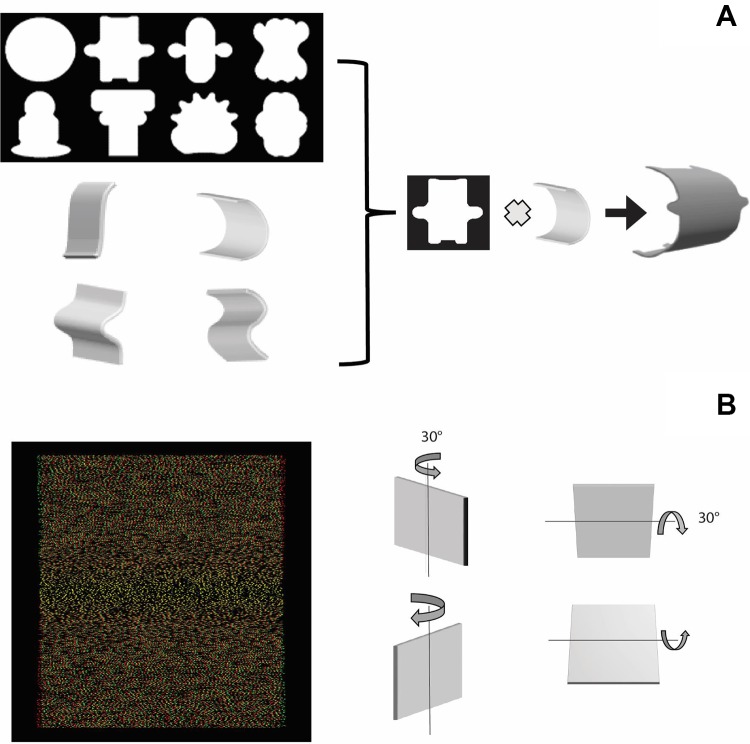Fig. 1.
Stimuli. A: 2-dimensional contours (top) and 3-dimensional profiles (bottom) used to create curved (2nd-order) surfaces defined solely by gradients of binocular disparity along the vertical axis of the shape. The icon on the far right is a rendering of the perceived stimulus. No perspective or shading information was present in the stimuli used in this experiment. B: random-dot stereogram of a planar surface with the top part tilted toward the observer (red in front of left eye in anaglyphs). Planar surfaces were either rotated along the horizontal axis (disparity variation along the vertical axis of the surface) or rotated along the vertical axis (disparity variation along the horizontal axis).

